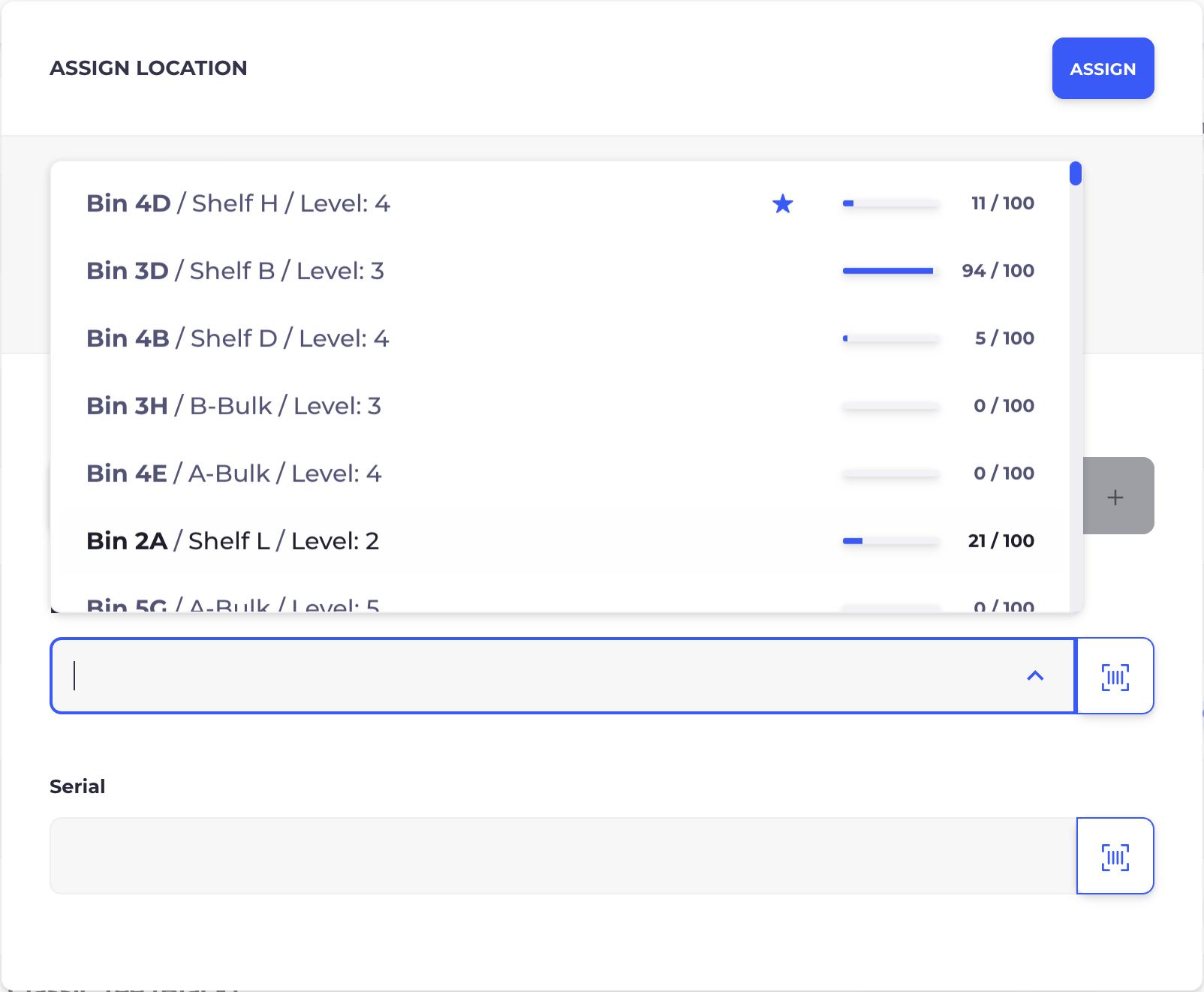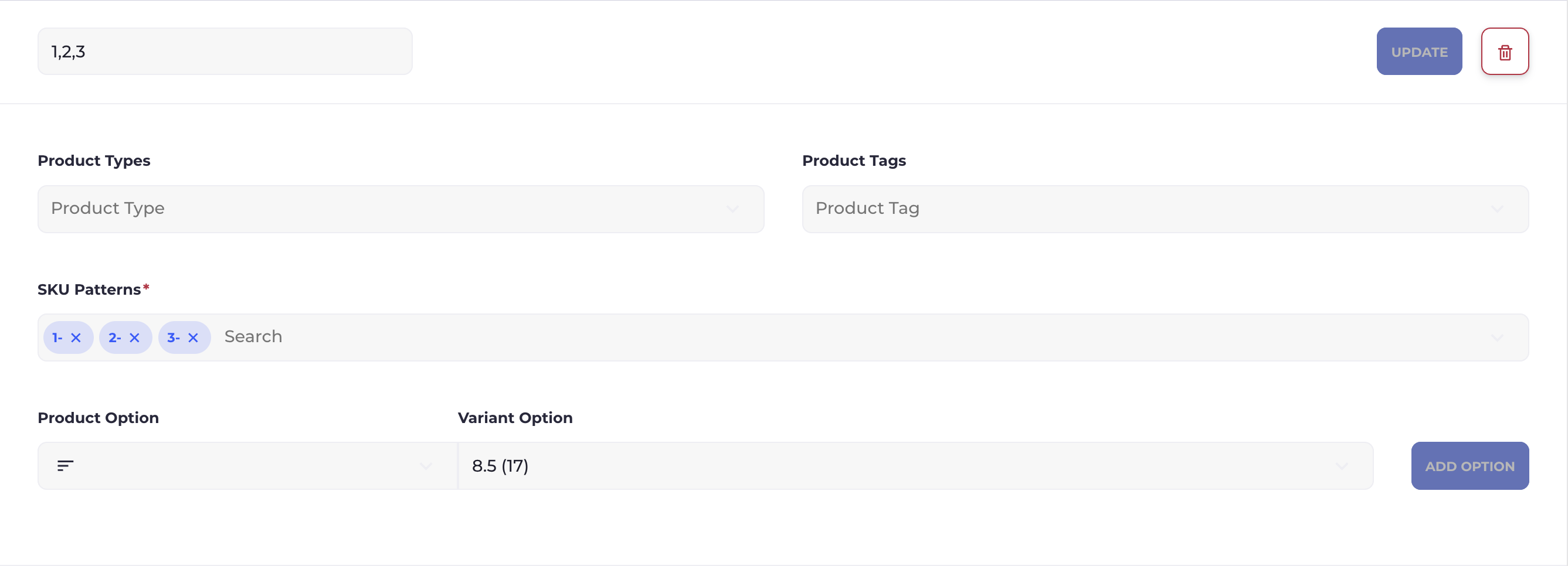Directed Inventory Put-Away
Directed put away bin criteria fields, including matching logic, SKU pattern specifications, and best practices for optimizing inventory placement
Introduction
Directed putaway is a system that automatically suggests optimal storage locations for inventory. This document explains how bin criteria fields work to rank and select appropriate bins for your products. Note: This feature is not enabled by default. First go into your settings and be sure that "Enable Check In Criteria" is turned ON

How Bin Criteria Work
When putting away inventory, the system evaluates each bin's suitability by matching product attributes against defined bin criteria. The more criteria that match, the higher the bin ranks in the suggested options.

Important Notes:
- All matching is case insensitive
- Multiple criteria sets can be associated with the same bin, bins that have multiple criteria matching the same item attributes will accumulate a higher score thus ranking higher.
- If a specific criteria type is included in a criteria set (e.g., the product tags list is not empty), at least one value must match for that bin to be considered.
Bin Criteria Fields
Each bin criteria consists of the following fields:
1. Name:
A descriptive identifier for the criteria set, this does not influence ranking or criteria matching, it's just for ease of use.
2. Product Types:
Product types/categories that should be stored in the associated bins.
- Example: "Shirts", "Pants", "Water Bottles", "Shoes"
3. Product Tags:
Specific tags assigned to products that indicate suitability for the bins.
- Example: "clearance", "seasonal", "new-arrival"
4. SKUs:
Specific product SKUs or SKU patterns that should be directed to these bins.
- Supports advanced pattern matching (see SKU Pattern Matching section)
5. Options:
Key-value pairs matching product and variant options.
- Example: Key="Size" and Value="Large" will match products with that option
Ranking Logic
The system assigns a "quality score" to each bin based on how many criteria match:
1. Each bin starts with a score of 0.
2. For each matching criteria category (product type, tag, SKU, or option), the score increases by 1.
3. Each bin's total quality score can exceed 4 if multiple criteria sets match the product.
4. Bins are sorted by their quality score, with higher scores appearing first in the selection list.
How Matching Works
For a bin to receive a quality score for a specific criterion:
1. Product Tags:
The product must have at least one tag that matches one of the tags listed in the criteria.
2. Product Types:
The product's type must match one of the types listed in the criteria.
3. Options:
At least one of the product's options must match both the key and value specified in the criteria.
4. SKUs:
The product's SKU must match one of the SKU patterns listed in the criteria.
Each successful match adds 1 to the bin's quality score. If any specified criterion doesn't match, the bin receives no score for that category and is effectively filtered out of consideration.
SKU Pattern Matching Specifications
The system uses a sophisticated pattern matching system for SKUs with the following capabilities:
Exact Matching: "123"
- Matches only the exact SKU "ABC123"
Prefix Matching "123-"
- Matches any SKU starting with "ABC"
- Example: "ABC456", "ABCXYZ" would match
Suffix Matching "-123"
- Matches any SKU ending with "123"
- Example: "XYZ123", "ABC123" would match
Contains Matching "-123-"
- Matches any SKU containing "123" anywhere
- Example: "ABC123DEF", "XYZ123456" would match
Wildcard Matching "A*C*3"
- Matches patterns where:
- Starts with "A"
- Has "C" somewhere after "A"
- Has "3" somewhere after "C"
- Example: "ABCD23", "ABC123", "A1C23" would match
Escaping Special Characters
- "abc\*-" Matches the literal string "abc*" (not as a wildcard)
- "\-abc" Matches the literal string "-abc" (not as a suffix pattern)
- "abc\-" Matches the literal string "abc-" (not as a prefix pattern)
- "\-abc\-" Matches the literal string "-abc-" (not as a contains pattern)
Regular Expression Matching "/w-(shoes|heels)/i"
We use standard JavaScript regular expression grammar. Simply define a pattern enclosed by /PATTERN/i and optionally add flags after your pattern. The above example would match w-shoes, w-heels
Priority Rules
1. Exact matches are prioritized over pattern matches
2. Longer matches are prioritized over shorter ones
Examples
Example 1: Basic Matching
A bin criteria with:
- Product Tags: ["clearance"]
- Product Types: ["shirts"]
For a product with:
- Tags: ["clearance", "summer"]
- Type: "shirts"
The bin would receive a quality score of 2 (matching both tags and type).
Example 2: Multiple Criteria Sets
Bin A has two criteria sets:
1. Set 1: Product Tags: ["clearance"] and Product Types: ["shirts"]
2. Set 2: Product Types: ["shoes"] and SKUs: ["ABC-"]
For a product with:
- Tags: ["clearance"]
- Type: "shirts"
- SKU: "ABC123"
Bin A would receive a quality score of 3:
- 2 points from Set 1 (matching both tags and type)
- 1 point from Set 2 (matching the SKU pattern)
Example 3: SKU Pattern Matching
A bin criteria with:
- SKUs: ["ABC-"]
Would match products with SKUs:
- "ABC123"
- "ABCDEF"
- "ABC-XYZ"
But would not match:
- "123ABC"
- "XYZABC"
Best Practices
1. Start Broad, Then Narrow: Begin by creating criteria based on product types or tags, then refine with more specific criteria like SKUs.
2. Use Meaningful Tags: Organize your product tagging system to support your putaway strategy.
3. Consider Physical Characteristics: Create criteria based on product dimensions, weight, or handling requirements.
4. Balance Specificity: Too specific criteria may result in few matches; too broad may not effectively direct products.
5. Regular Review: Periodically review your bin criteria to ensure they still align with your inventory and operations.
6. Test SKU Patterns: When using complex SKU patterns, test them thoroughly to ensure they match as expected.